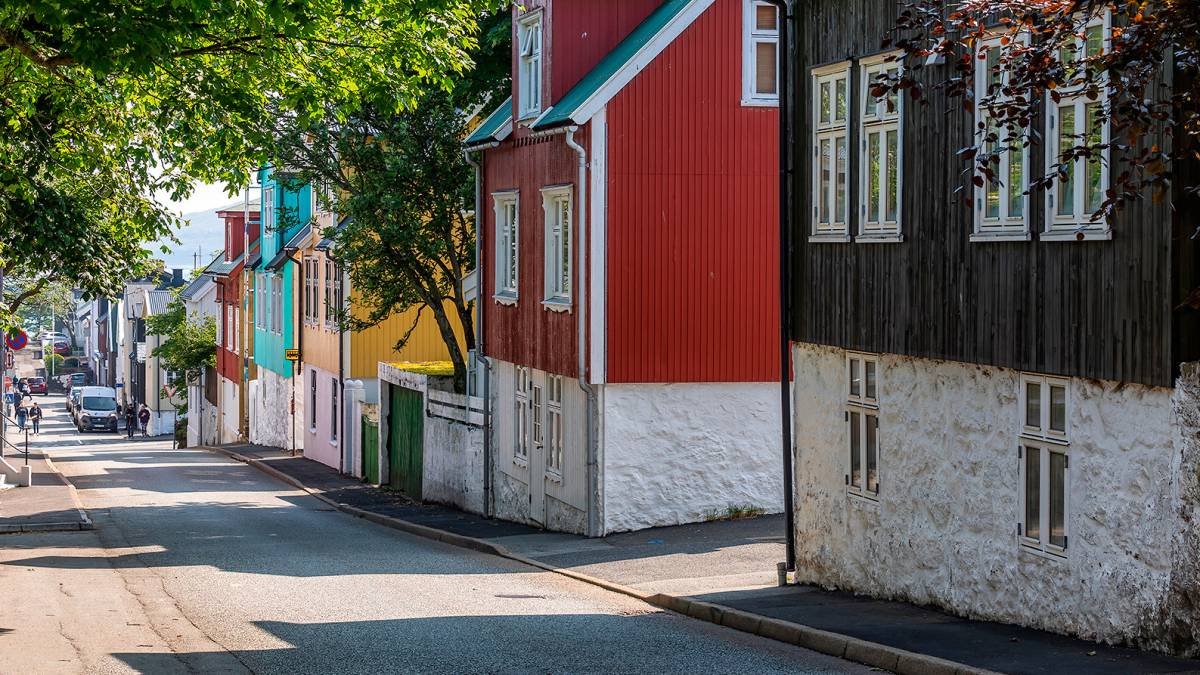Consumer price index
08. Jan 2024
Inflation falls to 2.8%

The Consumer Price Index (CPI) measures inflation as experienced by Faroese households in their daily living expenses. The latest CPI figures are from November 2023.
[px-graph-1]
While prices continue to rise, the pace is slowing down, with a 2.8% annual inflation rate in November 2023.
[px-graph-2]
Highest price hike in housing
The Consumer Price Index (CPI) consists of 12 main categories of goods and services. Although the annual inflation rate has gone down, all 12 main CPI categories except 'transport' saw price increases. 'Housing' led the charge, predominantly due to higher interest rates. The price of liquid fuels used for household heating and transport has risen since August, but it remains significantly lower than a year ago.
[px-graph-3]
Grocery prices still rising
‘Food and non-alcoholic drinks’ make up the largest portion of the average Faroese household spending. Prices in this category continue to rise, though at a slower pace than in the previous two years, going up 5.8% in the past year.
[px-graph-4]
Within the ‘food and non-alcoholic drinks’ category, prices of fruit, meat and bread have risen the most. Fruit prices increased by more than 9%. Meat, bread and cereal prices rose by just over 6%. The price of chocolate and other sweets has increased significantly more than in recent CPI reports, going up by more than 8% in the past year.
[px-graph-5]
Higher prices were registered in all ‘Food and non-alcoholic drinks’ subcategories. The price growth in milk, cheese and eggs has, however, slowed down, with a 1% year-on-year growth.
Interest rates have a significant impact on the CPI
Household expenses on housing saw an average increase of almost 9% from November 2022 to November 2023. Mortgage and interest rates have risen steadily in the past year. Interest expenses for households increased by almost 69% from November 2022 to November 2023.
[px-graph-6]
An almost 14% drop since November 2022 in the price of liquid fuels, used for household heating, has helped keep the inflation rate in check. District heating costs have remained unchanged since 2022, while electricity prices rose by just over 14% in 2023 compared to 2022.
[px-graph-7]
Slower price growth than in other countries
The Faroese annual inflation rate in November 2023 was somewhat lower than in the other Nordic and EU nations, with the exception of Denmark, which had a remarkably low rate of 0.6%.
Iceland had the highest annual inflation rate, at 7.7%, followed by Sweden (5.8%) and Norway (4.8%). The annual price growth in the Faroes is slightly below the EU average of 3.1%.
[px-graph-8]
Note that the EU inflation rate is based on the HICP index (the Harmonised Indices of Consumer Prices), which means that rental costs are not included.
From slow to fast price growth
After many years with slow and steady price growth in the Faroes, prices started soaring in 2021 in the wake of the Covid-19 pandemic. This price growth gathered further pace in 2022 after Russia’s full-scale invasion of Ukraine. In the past three years, from November 2020 to November 2023, consumer prices have risen by 17%. In other words, it has become 17% more expensive for households to purchase the same goods and services as in November 2020.
For about four years prior to the pandemic, the annual inflation rate ranged between 1% and 2% in the Faroes and throughout most of Europe. There was almost no inflation in 2020, the year when the Covid-19 pandemic hit hardest.
About the Consumer Price Index and inflation
Inflation is the rate of increase in prices over a given period. The Consumer Price Index (CPI) is the most widely used measure of inflation. It measures the overall change in consumer prices based on a representative basket of household goods and services.
The CPI is one of many measures of inflation in an economy. Others include the Producer Price Index, which is a measure of the change in prices that domestic producers receive for their goods and services, and the so-called GDP deflator, which is a measure of the price of all new, domestically produced, final goods and services in an economy in a year relative to their real value.
Changes in consumer prices vary across the categories of goods and services. The CPI weighting system reflects the relative importance of the goods and services as measured by their shares in the total consumption of households.
Faroese CPI figures are compiled quarterly, in February, May, August and November. This is done in accordance with international standards, thus allowing for comparisons with the CPI figures of other nations.